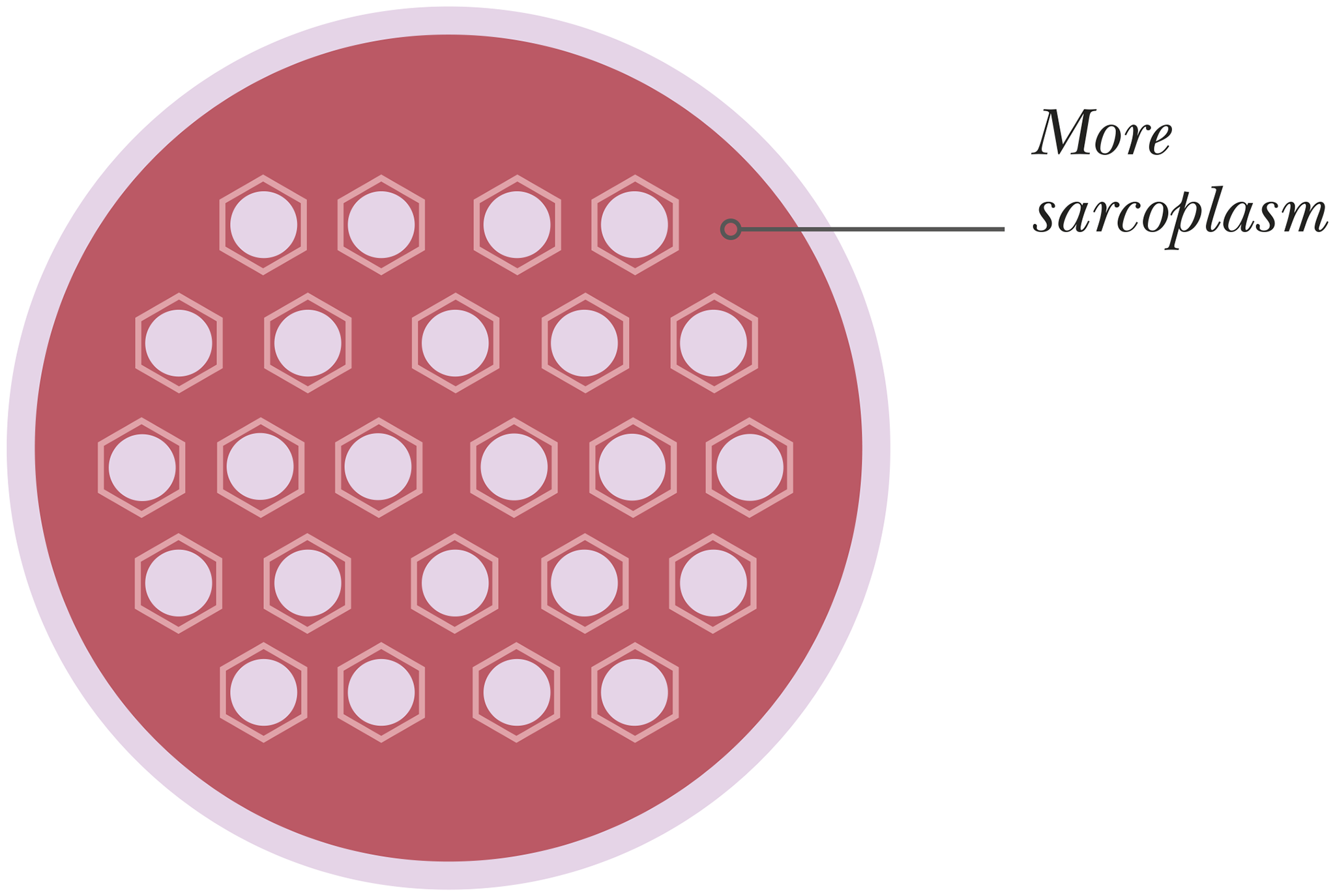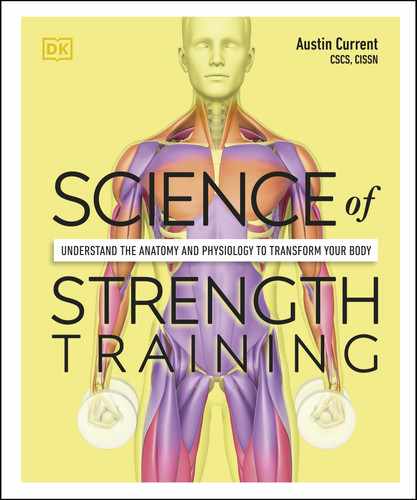How muscles grow
Muscle cell growth—or muscle hypertrophy—can be generally defined as an increase in size of skeletal muscle tissue. Strength training stimulates muscle hypertrophy via various routes, and specialist cells maintain, repair, and grow new muscle.
stimuli of growth
The current proposed understanding of what is occurring during the growth of skeletal muscle concerns three related stimuli: mechanical tension (the tension placed on a muscle fiber during strength training), metabolic stress (the accumulation of metabolic byproducts within the muscle fiber during training), and muscle damage (the microtears to the muscle fiber and disruption of the Z band).
The primary driver of muscle growth is mechanical tension. Fatigue, in part caused by the metabolic stress, raises mechanical tension, recruits more motor neurons to the muscle, and slows muscle fiber shortening. This combination of changes raises the number of muscles controlled, which accentuates the amount of mechanical tension produced. The resulting two-way relationship boosts tension further; metabolic stress is a byproduct of mechanical tension and also contributes to raising tension within a muscle.

n Double-tap image to read the labels
MECHANISMS OF HYPERTROPHY
satellite cells
Muscle satellite cells are a type of stem cell that plays a key role in the maintenance, repair (and growth), and remodeling of muscle fibers in response to exercise, especially strength training. Typically, they are dormant until needed. When stimulated, satellite cells can help form new muscle fibers, help an existing muscle fiber by donating their nuclei, or return to replenish the pool of satellite cells.

n Double-tap image to read the labels
![]() The decline of muscle mass with age
The decline of muscle mass with age
Muscle atrophy (the opposite of hypertrophy) is defined as the wasting or reduction in size of muscle tissue. Such a reduction in muscle is linked to poor quality of life and increased morbidity. After the age of 40, the body progressively loses muscle mass each year. However, consistent resistance training along with a good intake of protein (see Fuels for strength training) has been shown to reduce this progressive loss. The completion of physical activity, specifically strength training, can prevent and treat the conditions of sarcopenia (muscle loss) and dynapenia (loss of muscle strength and power).
How muscles get bigger
Skeletal muscle protein cycles through periods of synthesis and breakdown on a daily basis (see also p.34). Muscle growth occurs whenever the rate of muscle protein synthesis is greater than the rate of muscle protein breakdown. Muscle hypertrophy is thought to be a collection of adaptations to different components—the myofibrils, the sarcoplasmic fluid, and the connective tissue.
MUSCLE FIBER BEFORE GROWTH
The circle represents a muscle fiber in cross-section. Within there are many myofibrils, and surrounding them is sarcoplasmic fluid and a honeycomblike layer of connective tissue.

n Double-tap image to read the labels
myofibrillar hypertrophy
Myofibrillar protein makes up 60–70 percent of the protein in a muscle cell. Myofibrillar hypertrophy is the increase in number and/or size of myofibrils by the addition of sarcomeres.

n Double-tap image to read the labels
sarcoplasmic hypertrophy
A rise in the volume of the sarcoplasm (which includes mitochondria; sarcoplasmic reticulum; t-tubules; enzymes; and substrates, such as glycogen) also enlarges the muscle fiber.

n Double-tap image to read the labels
connective tissue hypertrophy
The extracellular matrix of the muscle fiber is a three-dimensional scaffolding of connective tissue. Increases in its mineral and protein content lead to muscles getting bigger.

n Double-tap image to read the labels
